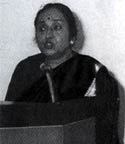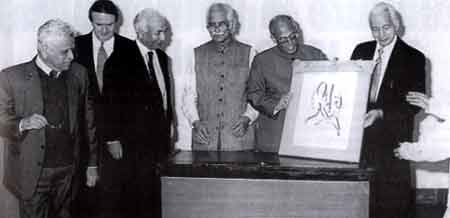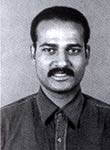EVENTS
Lec-dem on Devadasi

The devadasi system has a significant place in the history of India especially in art and culture. Since ancient times till the advent of the British period, the system was a part of the Indian Society, which integrated religion, custom and tradition. The deity of temple can be compared to a feudal lord, who was provided with all the amenities and pleasures of life. The performing arts were a part of the sixty-four Shodashopachara (offerings) to the deity. Smt. Padma Sampathkumaran presented a lecture on the art of devadasi (January 11). The institution of the devadasi was born around the 7th century. Therese were the dancers in the temples of south India. There were Rajadasis-who danced before the dhwajastamba (sacred flagstaff) of the temple Alankaradasis – who performed during social functions, Devadasis who danced regularly in the temples and Swadasis who performed only on special occasions like Kumbabhishekam, (the consecration ceremony). Devadasis also assisted the priests in some of his duties. Devadasis also assisted the priests in some of his duties. Today’s highly codified Bharatanatyam is a dance form handed down from generations by devadasis. However with the banning of the devadasi system, the temples withdrew support and the devadasis were left in poverty. With them the great form art also deteriorated.
Some took cudgels for the devadasis. Among them was E. Krishna Iyer who underwent training in Bharatanatyam and Abhinaya from traditional devadasis. He also wrote a great deal supporting their cause. Though the term devadasi is often misunderstood these days, in their hey days, they were revered and respected.
Dharani Mantra: Its origin and growth

Dharani is an important technical term of the Mahayana Buddhism and is used as a word and a mantra. Discussing the origin and growth of darnai mantra in a lecture (November 29, 2001) Dr. S.P. Sharma said its first occurrence is found in the Gatha-Sanskrit and its pure Sanskrit from is Dharini.
However, in Gatha-Sanskrit both the forms are found. Etymologically it means ‘one who bears.’ In Buddhist context also, its meaning and purport are the same. Hence there were several penances undertaken for its achievement. The achievement of Dharani had been listed amongst many purports of Prajnaparamita. Later on, its meaning got extended to a talisman comprising a mantra, to be worn on the arm or around the neck. Many scholars believed that the dharanis have originated from the Prajnaparamitas.
In fact it has been often mentioned in the Prajnaparamita literature that warning the Prajnaparamitas after having them written, has supernatural significance although there are no recorded references of the term dharani. Still later, a lot of literature was composed on the dharanis. The Chinese tradition informs that the mahasanghikas had a ‘pitaka’ named dharani tripitaka. Besides these, there are a very large number of treatises which mention the dharani mantra. If all the dharani names and mantra of the Mhayana Buddhism were compiled it would yield a treatise of great importance.
IGNCA conservationist Invited to International Meet

Ms. Ritu Jain, Conservationist Assistant was invited to deliver lectures and hold practicals on ‘Japanese Tools and Techniques of Paper Conservations of Palm Leaf and Paper Manuscripts at Orissa Art Conservations Centre, State Museum, Bhuvaneshwar on the January 15 and 2002. The training course was attended by librarians, archivists, research scholars and conservators from India and abroad.
Japanese paper conservations methods are employed today in conservations studies throughout the world. They are highly appreciated since they are based on a long and unbroken tradition. The application of different types of Japanese had made paper and natural adhesives, such as wheat starch paste and animal glue in mounting procedures, as well as the use of a variety of high quality tools have contributed to their high reputation.
Ms. Jain was also invited to deliver a two-day lecture series on February 4 and 5 on Paper Making at National Museum, Delhi under the three-month training programme of ‘Conservation of Paintings’. She discussed the beauty and natural strengths of hand made paper. The training programme was on making paper, different sources of papermaking and various raw materials used. The trainees also made a variety of hand made paper in the laboratory.
Human Rights Day-through a Painters Brush

IGNCA hosted an exhibition of paintings by Dr. Amaranath Sehgal on the occasion of Human Rights Day. The exhibition was inaugurated on December 10, 2001 by former Chief Justice of India Shri Ranganath Mishra. Shri Mishra appreciated the sketches of Shri Sehgal and said UNESCO has also recognized his gift of the art. Speaking on the occasion Dr. L.M. Singhvi, President IGNCA Trust said an artist, more than anybody else, is sensitive about the violation of human rights.
[ Newsletter | List of Newsletter ]
<




